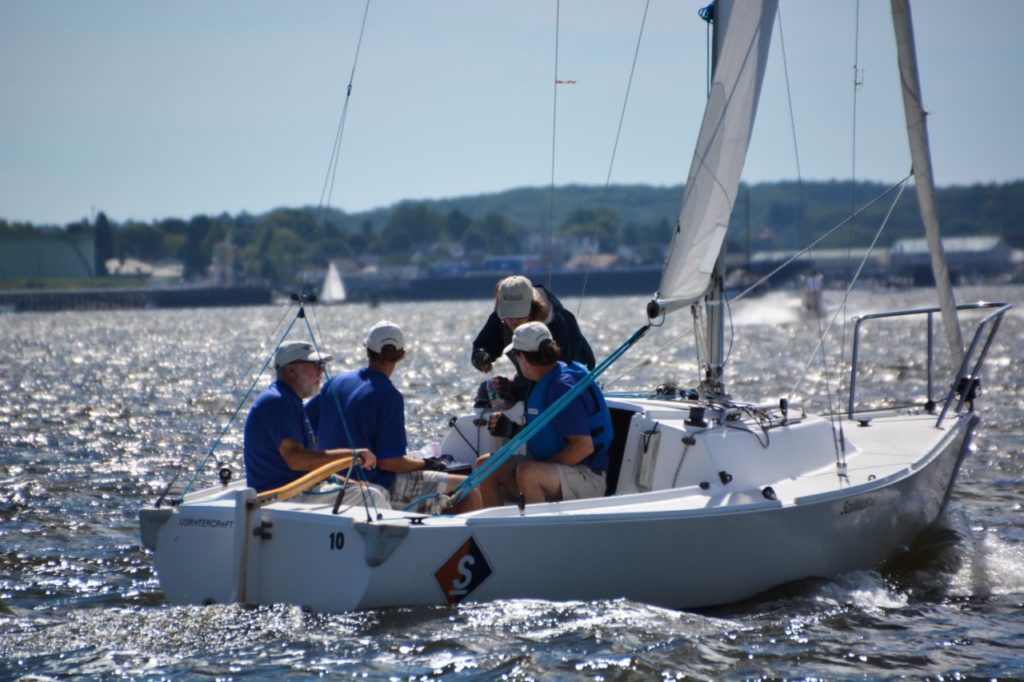Boating 101: A Quick Guide to Boat Operator Licensing
Posted
Last Updated
By OceanGrafix.
Now that it’s the off season for a lot of boaters, it may be a good time to review boat operator licensing requirements and make sure you’re up to date. For recreational boaters in particular, the big issue in the eyes of the United States Coast Guard (USCG) and many state licensing bureaus is safety education.
Safety education and licensing is a multiple win: it gives boat operators the skills to keep passengers and vessels safe while avoiding fines and saving money on insurance premiums.
Here’s a rundown of operator license types, where they’re required, and when they are needed. (This list does not include boat registrations requirements, vessel insurance requirements, passport requirements and USCG life jacket requirements.)
1. Boater safety education, $55 to $65
Most states require this certification for recreational boat operators.
Why is this “license” important? It teaches safe navigation. A boat safety course covers the proper steps to take in the case of capsizing, person-overboard, fire, sinking or collision. Not having this training often leads to boating accidents. In fact, the USCG estimates that 70% of the 7,700 boating accidents each year are caused by operator error. More than 80% of recreational boat operators involved in fatal boating accidents have not taken a boater education course.
Only Maine, Arkansas, Arizona, Idaho, Wyoming, South Dakota, Alaska and Hawaii do not require boater safety education. Boat operators take a course, often online, and then obtain an I.D. card at a state licensing center. For many boaters, this is all that is necessary in terms of licensing, along with annual registration fees for your vessel. The certification serves as a “boating license.”
2. Operator of Uninspected Passenger Vessels (OUPV), $900 to $1,500
You’ll need this license if you operate a vessel over 100 gross tons and with up to 6 paying passengers. These vessels usually don’t have to be inspected by the USCG Commercial Vessel Inspection Standards. The license is commonly for operators of, say, a small fishing charter or sightseeing boat.
To obtain the license, the boat operator first has to use the boat for 90 days, often under the tutelage of a licensed person. Actual hours need to be logged when on the Great Lakes or the ocean. This is followed by a course and evaluation exam, for which many boat operators use a tutor. Requirements don’t stop there. Operators also are required to have a Transportation Worker Identification Credential (TWIC) from the Transportation Security Administration. Plus, they must complete an American Red Cross CPR course and a health exam, followed by a background check and drug test.
3. Master License, $1,140 to $1,670
A Master License is required for an operator of a vessel carrying more than six passengers on a boat that also is required to pass USCG commercial inspection standards. The license itself varies depending on whether the vessel is 25, 50 or 100+ tons. Requirements are similar to the OUPV license, where you need CPR certification, TWIC, a background check, drug testing and a physical examination. Those with a Master License must, in many jurisdictions, sign up for random drug testing.
Some mariners prepare to qualify for the OUPV and Master License by working for a licensed captain to get the knowledge and experience required for certification.
Endorsements
The two most common required endorsements are for towing or for sailing, each obtained by attending additional courses at about $200 each.
Start the process by taking the safety education course
Given the importance of boating safety and licensing in particular, a lot of resources offer this training. Boaters can select from online, video or classroom formats. Times and locations for the safety education course can be found using the links below:
- U.S. Coast Guard Auxiliary (click here to read about available courses)
- U.S. Power Squadrons
- National Safe Boating Council
- Boat-Ed
- Boat Safe
- Safe Boating America
- Mariner’s Learning System
Consequences of not having an appropriate license are stiff
Fines for those without the correct licensure depend on the level of required licensing but can easily be in the $5,000 to $40,000 range depending on circumstances. But the safety of the operator, crew and passengers should be the biggest motivation to make sure operator licensing is correct and up to date.
READ MORE at oceangrafix.com

